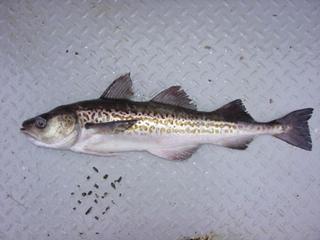America's Top Port Sees Streak Tweaked

Wednesday, September 19 2012
The National Oceanic and Atmospheric Administration just issued its fisheries report card for 2011, and Alaska is on the honor roll. Last year, 2.3 billion pounds of seafood worth $1.3 billion crossed the state’s docks.
About a third of that fish came through Unalaska. The city has long been proud of its reputation as America’s number #1 fishing port. But as KUCB’s Alexandra Gutierrez reports, Unalaska got a bit of bad news in an otherwise rosy assessment of Alaska’s fisheries.
For more than two decades, Dutch Harbor has held the title of America’s busiest fishing port. At least a half billion pounds of pollock, crab, and other seafood have crossed its docks every year since 1989. But Wednesday, Dutch Harbor got a bit of a surprise. Its streak had actually been interrupted. Here’s National Oceanic and Atmospheric Administration spokesperson Julie Speegle.
SPEEGLE: This is the 15th year that Dutch Harbor was the top port for volume, and I guess last year we were 22nd.
This isn’t a mathematical error. NOAA’s annual fisheries report card was released Wednesday, and analysis of previously confidential data shows that in 1996, Reedville, Virginia, actually beat out Dutch Harbor by 5 million pounds. It’s like if ten years from today, Michael Phelps had to trade an Olympic gold medal for a silver because of a change in how freestyle races were monitored.
Unalaska Resource Analyst Frank Kelty was among the industry watchers who noticed the change. He says that Reedville isn’t like your usual Alaska fishing port. He says that they don’t deal with seafood and that instead they process: KELTY: Very small menhaden or smelt type of fish that is ground up into fish meal or fertilizer.
For farming, not eating. Kelty is a little perplexed by the change in historical rankings, but he’s taking it in stride. The city is going to have to fix up some of its marketing materials, though.
KELTY: We might have to on that little brochure we do for the legislature. I might have to adjust some things.
Fifteen years isn’t a bad record, though, and Dutch Harbor continued its reign as busiest port with 700 million pounds of seafood delivered in 2011. The value of that catch was $200 million, which also makes it the second most profitable port in the country, right after New Bedford, Massachusetts.
Many of Alaska’s other ports also fared well in NOAA’s assessment.
Akutan was the next busiest Alaska port, coming in at number three. While the island has long been a major player in the seafood industry, this is the first year that NOAA has included the port on its list. That’s because Trident Seafoods is the only operator there, and NOAA could not list the plant’s output for confidentiality reasons. Its 400-million-pound catch is combined with that of False Pass and Adak for the purposes of this year’s rankings.
Kodiak was also a top performer. It was number five nationwide in terms of landings, and number three in terms of value. It brought in 370 million pounds of seafood worth $165 million. Just two years before, the port was bringing in just $100 million.
Port Moller, Naknek, King Salmon, Sitka, Seward, Dillingham, Togiak, Cordova, Petersburg, and Ketchikan were also listed among the country 25 top ports in terms of poundage and value.
Across the country, seafood landings exceeded 10 billion pounds, an increase of nearly 2 billion pounds.



